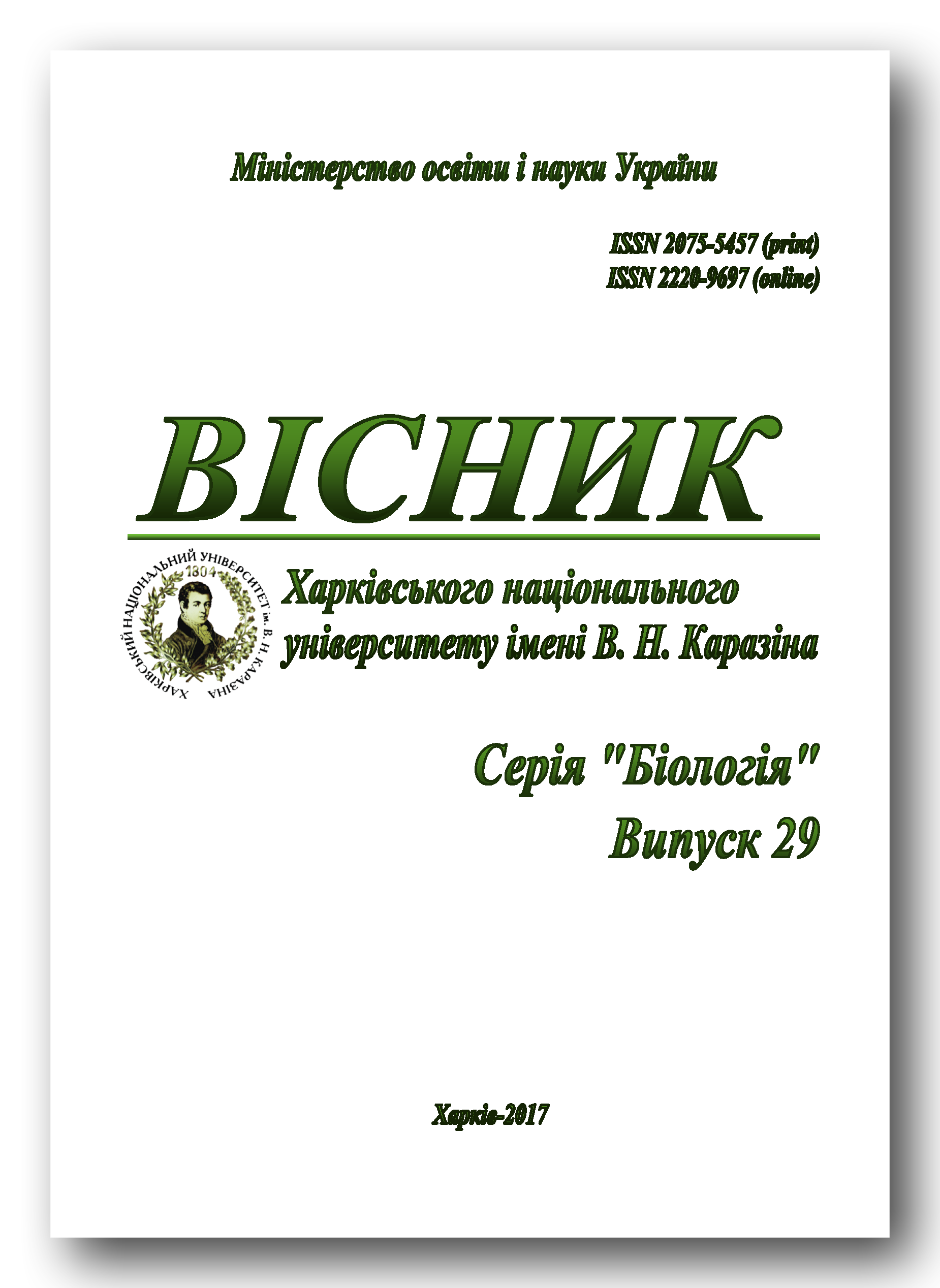The paradox of the reproduction of triploid Pelophylax esculentus in the hemiclonal population systems in Brusivka (Donetsk region) and Kreminna (Lugansk region)
Abstract
European water frogs from Pelophylax esculentus complex provide a unique interest as interspecies hybridization and poliploidization example. Diploids and triploids of Pelophylax esculentus can reproduce in crossings with parental species due to hemiclonal heredity phenomenon. Different types of hemiclonal population systems (HPS) has been registered in Siversky Donets diversity center of Pelophylax esculentus complex on the Eastern Ukraine, even HPS of type not described early. The composition of the hemiclonal population system (HPS) of water frogs from Lake Podpisochne (Lugansk region) was examined, and the composition of HPS from Brusivka village vicinity (Donetsk region) was first defined using erythrocyte cytometry and caryological analysis. Both of the HPS are composed of both sexes of marsh frog Pelophylax ridibundus and triploid females of edible frog Pelophylax esculentus with genomic compound LLR (two Pelophylax lessonae and one Pelophylax ridibundus genomes) only. According to the current data triploids in Siversky Donets diversity center of Pelophylax esculentus complex can produce only haploid gametes. Thus, it is unclear how LLR females reproduce in these HPS.
Downloads
Authors retain copyright of their work and grant the journal the right of its first publication under the terms of the Creative Commons Attribution License 4.0 International (CC BY 4.0), that allows others to share the work with an acknowledgement of the work's authorship.




